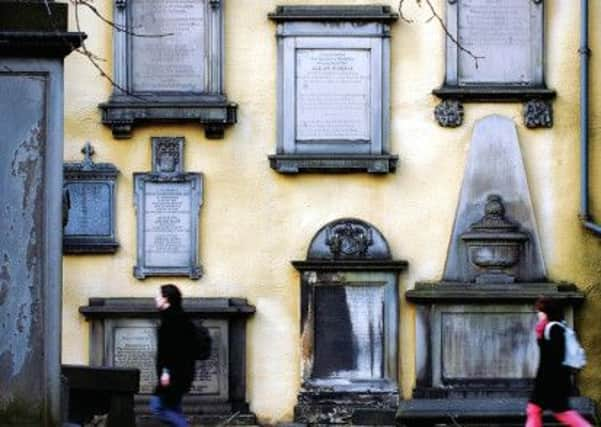Graveyards set for new life as visitor centres


But now the nation’s historic graveyards are set for a revival under plans to hand them over to communities to help run and promote them as visitor attractions.
Little-known memorials, forgotten local heroes and mysterious carvings will be recorded and championed for the first time across the country.
Advertisement
Hide AdIt is hoped a network of campaign groups and an army of volunteers will also make significant new discoveries, secure the future of under-threat sites and help showcase significant final resting places.
Rescue plans being developed for historic cemeteries will also tackle dangerous gravestones, crumbling and neglected memorials, and long-running antisocial behaviour problems.
It is anticipated they will also be transformed through the development of new tourist trails, wildlife projects, cultural performances and events, and visits from school parties.
Under a model being piloted in Edinburgh’s world heritage site – where five historic cemeteries have been on an international “at risk” list for the past five years – they would be run by a new graveyards trust.
Friends groups are to be set up for each graveyard – Canongate, Greyfriars and St Cuthbert’s Kirkyards, and the New & Old Calton Burial Grounds – to help research the background of each site, tackle long-standing problems, and draw up improvement and fundraising plans which the Heritage Lottery Fund will be asked to help realise.
The five sites include the final resting places of the philosopher David Hume, poet Robert Fergusson and economist Adam Smith, as well as memorials to the Scottish-American soldiers who fought in the American Civil War, Covenanters killed during decades of oppression in the 17th century and a watchtower built in the 19th century to guard against bodysnatchers.
Advertisement
Hide AdThe plans follow the publication of a damning report which highlighted a string of problems, including poor security, problems with alcohol and drug abuse, vandalism, rough sleepers and prostitution, as well as poor access and a public perception of them as unwelcoming and unsafe places.
The same report, by Dr Susan Buckham, one of Scotland’s leading experts on historic graveyards, said the five graveyards were of “exceptional cultural significance”.
Advertisement
Hide AdIt states: “All five graveyards are unique in their instigation, development and relationship to the city.
“When considered together, their association with local and national civic, religious and political events throughout the last 500 years constitutes them as a vital resource in understanding the development of the city and the events that have shaped both Scottish and British society into its present-day state.”
Dr Buckham said the Edinburgh report was effectively a “blueprint” for the future, which could be replicated across the country and build on several existing projects.
She added: “The vulnerability of these sites in Edinburgh is not as obvious as if they were under threat from developers or housing.
“They are tricky to deal with because none of them are in active use for burials any more. There has been long-term deterioration of these graveyards and their potential is just not being realised.
“The aim of the project is to encourage community stewardship of the graveyards, ensure their management is shaped by local needs and help people to realise they are worth looking after.
Advertisement
Hide Ad“The idea is to audit each of them in detail and build up a complete picture of what each graveyard has to offer.
“There have been quite a few projects in England of the kind of work that can be carried out and we are just starting to see that model in Scotland now.
Advertisement
Hide Ad“The bottom line is we need people to visit these sites and to use them more. We need to bring some life to them, because they cannot simply be outdoor museums.”
National charity Archaeology Scotland has set up an “adopt-a-monument” scheme to help raise awareness of the nation’s historic gravestones, saying their number far outstrips the resources that are needed to conserve them.
Director Eila Macqueen said: “There is quite a lot of work going on in Ireland to get the public involved in the history of graveyards and they are now using new technology to allow people to download information onto their phones when they visit these places.
“The ideal scenario is to have a network of volunteers across the country who can then be trained up to work on various recording and conservation programmes in historic [sites] and help raise funds to ensure their survival.”